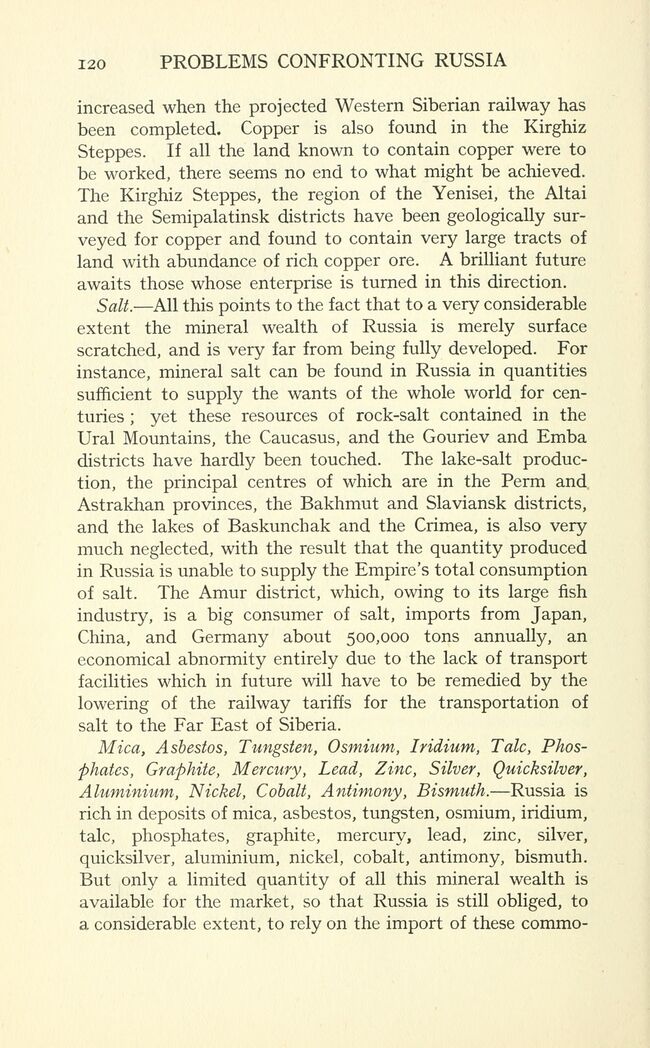
Full resolution (JPEG) - On this page / på denna sida - IX. The economic resources of Russia with special reference to British industrial and commercial opportunities

<< prev. page << föreg. sida << >> nästa sida >> next page >>
Below is the raw OCR text
from the above scanned image.
Do you see an error? Proofread the page now!
Här nedan syns maskintolkade texten från faksimilbilden ovan.
Ser du något fel? Korrekturläs sidan nu!
This page has never been proofread. / Denna sida har aldrig korrekturlästs.
102 PROBLEMS CONFRONTING RUSSIA
increased when the projected Western Siberian railway has
been completed. Copper is also found in the Kirghiz
Steppes. If all the land known to contain copper were to
be worked, there seems no end to what might be achieved.
The Kirghiz Steppes, the region of the Yenisei, the Altai
and the Semipalatinsk districts have been geologically
surveyed for copper and found to contain very large tracts of
land with abundance of rich copper ore. A brilliant future
awaits those whose enterprise is turned in this direction.
Salt.—All this points to the fact that to a very considerable
extent the mineral wealth of Russia is merely surface
scratched, and is very far from being fully developed. For
instance, mineral salt can be found in Russia in quantities
sufficient to supply the wants of the whole world for
centuries ; yet these resources of rock-salt contained in the
Ural Mountains, the Caucasus, and the Gouriev and Emba
districts have hardly been touched. The lake-salt
production, the principal centres of which are in the Perm and
Astrakhan provinces, the Bakhmut and Slaviansk districts,
and the lakes of Baskunchak and the Crimea, is also very
much neglected, with the result that the quantity produced
in Russia is unable to supply the Empire’s total consumption
of salt. The Amur district, which, owing to its large fish
industry, is a big consumer of salt, imports from Japan,
China, and Germany about 500,000 tons annually, an
economical abnormity entirely due to the lack of transport
facilities which in future will have to be remedied by the
lowering of the railway tariffs for the transportation of
salt to the Far East of Siberia.
Mica, Asbestos, Tungsten, Osmium, Iridium, Talc,
Phosphates, Graphite, Mercury, Lead, Zinc, Silver, Quicksilver,
Aluminium, Nickel, Cobalt, Antimony, Bismuth.—Russia is
rich in deposits of mica, asbestos, tungsten, osmium, iridium,
talc, phosphates, graphite, mercury, lead, zinc, silver,
quicksilver, aluminium, nickel, cobalt, antimony, bismuth.
But only a limited quantity of all this mineral wealth is
available for the market, so that Russia is still obliged, to
a considerable extent, to rely on the import of these commo-
<< prev. page << föreg. sida << >> nästa sida >> next page >>